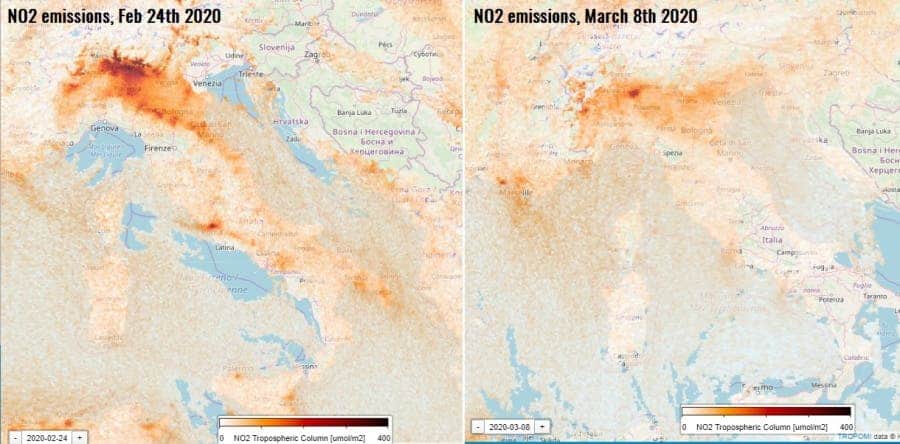A similar thing was observed when China fought the coronavirus.

Italy has officially seen the most COVID-19 cases after China. Most of the country’s cases are concentrated in Lombardia — the northern area around Milan and Venice.
Lombardia is one of the richest and most industrialized areas of Italy, and it’s also one of the most polluted areas in the country (and in Europe). But as the region — and then the entire country — went on lockdown, industrial activity, tourism, and general activity went down.
According to data from the @CopernicusEU satellite monitoring program, nitrogen dioxide levels in northern Italy have severely declined following the country-wide lockdown order.
The data was obtained with the Sentinel-5 Precursor — the first Copernicus mission dedicated to monitoring our atmosphere. The satellite carries instrumentation that monitors a number of gases including nitrogen dioxide, ozone, formaldehyde, sulfur dioxide, methane, carbon monoxide, and aerosols.
“Although there could be slight variations in the data due to cloud cover and changing weather, we are very confident that the reduction in emissions that we can see coincides with the lockdown in Italy causing less traffic and industrial activities,” Claus Zehner, the mission’s manager at the European Space Agency, said in a statement.

Nitrogen dioxide is an air pollutant produced by industrial, heating, and transportation activity. Combustion of fossil fuels (from heating systems, engines, power plants, or other industrial activity) is strongly linked with nitrogen dioxide pollution. It is not surprising that, as activity decreased in northern Italy, so too did the pollution. But it is a striking comparison nonetheless.
A similar phenomenon was observed in China as the country went on lockdown weeks ago: there was a remarkable drop in pollution all over the affected area of Hubei. Now, activity is already starting to pick up.

There’s a stinging irony in these observations. This (temporarily) cleaner air is brought in by a respiratory disease. It is perhaps an important reminder that even after we shall deal with this virus, an even more important challenge awaits us: cleaning the planet from our own mess.






